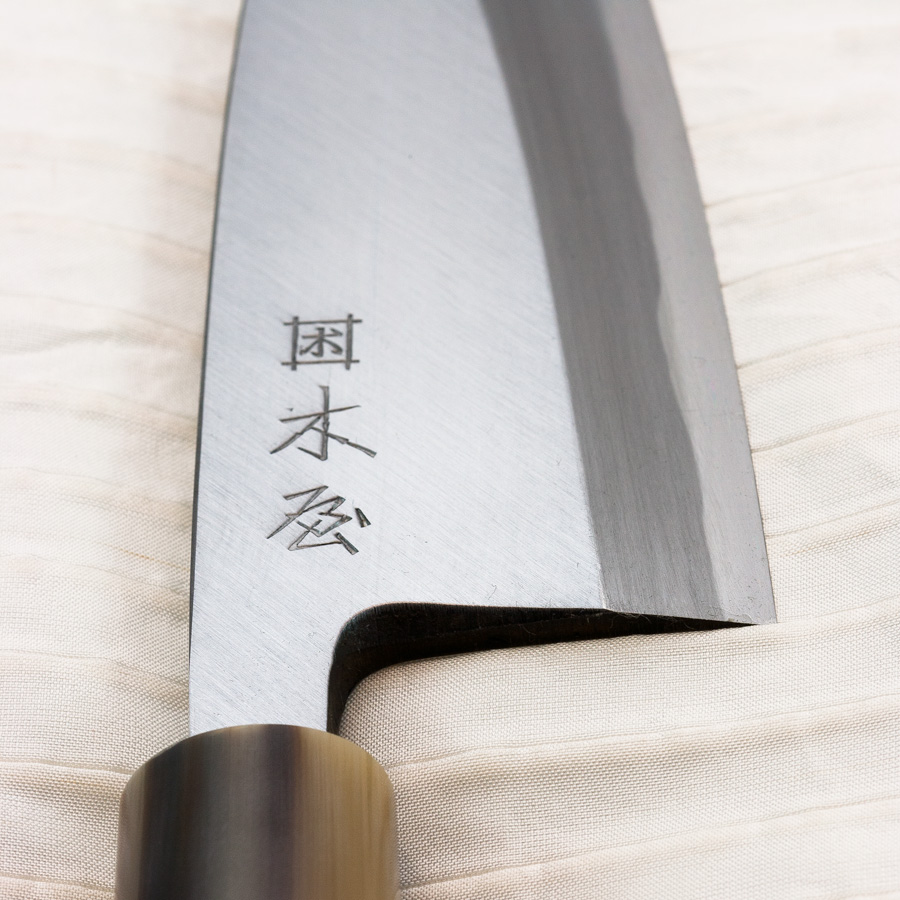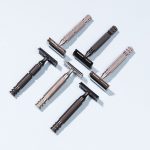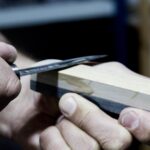Learning how to sharpen kitchen knives can be tricky. If you sharpen the blades incorrectly, you are apt to ruin the blade. Sharpen too frequently and you’re cutting the life of your knife in half. These knife sharpening tips give you insight to this process for both Japanese blades and other blades.
Which Knife Sharpener To Use?
Sharpening European High End Chef Knives
You can use a honing steel or a whetstone to sharpen your kitchen knives like the Kamagata Western Style Kitchen Knife. The manner used will depend on which of these you choose.
- Sharpening with a Steel. Honing a knife doesn’t really sharpen the knife but it will help bring the blade into alignment. The only time a honing steel actually sharpens is when it is coated with diamond grit, but then it only works minimally. Honing should be done every time you use a knife to get the tool into proper working conditions. These are the rods that are in many kitchen knife sets.
- Whetstone Sharpening. The whetstone will need to have soaked in water for about twenty minutes or so prior to sharpening the knife. After soaking, place on a towel and make sure that the coarse side of the stone is facing upwards. Western knives will need to be sharpened at a 20 to 25 degree angle against the stone to keep the edge. Hold firm and slide away from yourself on the stone from the tip of the blade to the heel in one firm stroke. Repeat this about ten strokes each side. Turn the sharpening whetstone over to the fine side of the stone and repeat this same movement again for ten strokes each side. After you are done, clean the blade and wipe it down.
Sharpening Japanese Kitchen Knives
Sharpening a quality Japanese blade, such as the Deba Honkasumi Japanese Chef Knife, means adhering to a set pattern. Here is a step by step guide to creating a great edge to your high end Japanese knives depending on which of the three types of Japanese whetstone you are using. If you sharpen frequently, most times you can begin with the Nakato stone, if not always start with the Arato stone. All the Japanese whetstones will need to presoak ten minutes in water.
- Sharpening with Arato Whetstones. The Arato whetstone is rough, around 600 grit, and used for angle-making, and repairing chips and tips. You’ll want an angle of 10 to 15 degrees, or about the height of two coins between the whetstone and the blade of the knife. Push the knife down the whetstone at that angle and then back up. This is a single stroke for a Japanese whetstone. Repeat five times. Turn the blade over and repeat this same process with the other side of the knife to get the repairs done on both sides of the blade. Then move on to the Nakato whetstone.
- Sharpening with Nakato Whetstones. This whetstone is medium-rough, about 1,000 grit, and used for sharpening and making a sharp angle. Using the Nakato whetstone is done in the exact same process as the Arato stone. Start with the tip of the knife and gradually work to the base of the knife. Do this five times in an up and down motion, then flip the knife over to do the same motion on the back side of the blade. When you are done, move on to the Shiageto whetstone for the finishing work.
- Sharpening with Shiageto Whetstones. This whetstone is small-rough, approximately 1,500 grit, and is typically used for the sharpening finishing work. Hold your knife onto the Shiageto stone from the tip to the base of the knife. Keep the angle you’ve mastered with the Arato and Nakato stones and move the knife blade from the tip to base, down the stone and back up again, a total of five times. Repeat this process, holding it the same manner and the same angle, on the other side of the blade. When you’ve done that five times, your blade is done. Wash your knife and towel dry to preserve the new edge and sharpness. Practicing this technique can make you a master of knife sharpening.
Quality kitchen knives were made to be sharpened in order to be enjoyed for a long time. They are not able to keep a sharp edge without this basic form of maintenance. When you sharpen chef knives, you’re more able to get through those tough fruits and vegetables with ease. Even the sharpest knives will over time lose their edge and need a whetstone or honing steel.
Image of Kasumi knife and Shapton 1000 grit stone by Joseph Chan





